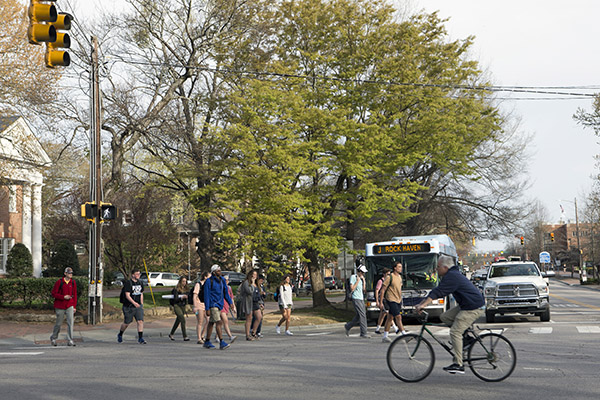
The Town of Chapel Hill’s North-South Bus Rapid Transit project began as a 30-month study to identify and evaluate a series of transit options for one of the town’s busiest corridors and most vital thoroughfares, which runs along the Martin Luther King, Jr. Boulevard, South Columbia Street, and US 15-501 South. This corridor, which is approximately 8.2 miles long, begins in the north at the Eubanks Road park-and-ride lot and ends in the south at US 15-501 at the Southern Village park-and-ride lot.
The planning study began in 2013 and concluded in 2016 and was led by Chapel Hill Transit in coordination with its partners, the Town of Chapel Hill, the Town of Carrboro and the University of North Carolina – Chapel Hill.
N-S BRT GOALS
- Increase the efficiency, attractiveness and utilization of transit for all users
- Improve multi-modal connectivity between the northern and southern portions of the corridor
- Improve pedestrian and non-motorized access to corridor stations
- Enhance connectivity of the corridor to the regional transportation network
- Support land use and development patterns that reflect the vision for growth contained in local and regional plans and policies
- Contribute to regional equity, sustainability and quality of life
- Develop and select an implementable and community-supported project
KEY FINDINGS OF THE NORTH-SOUTH CORRIDOR STUDY:
The study phase, which included public involvement and feedback, resulted in four key findings.
- Current station locations should be reviewed. The combination of fewer stations, dedicated lanes and traffic signal priority will result in time savings along the corridor.
- The N-S BRT must provide direct connection to UNC Hospitals & the proposed Durham-Orange light rail system.
- The N-S BRT must include exclusive lanes for buses wherever possible. In a few limited areas, targeted lanes are not feasible. However, dedicated lanes will be used when possible.
THREE LOCALLY PREFERRED ALTERNATIVES (LPA):
Based on the key findings and feedback from the public, three versions of the same alternative have been identified as the LPA.
- The variations are related to dedicated lane configuration (use of curb or center dedicated lanes, either newly-constructed or conversion of an existing lane to transit-only). These variations occur north of Hillsborough Street.
- Carrying these variations into the engineering and environmental clearance process will enable the community to better understand the benefits and impacts of each and will help to inform the detailed design and decision-making process.
NEXT STEPS
The current phase of the N-S BRT project is scheduled for 21 months, with completion anticipated in September 2019. During the 21-month schedule, the study will:
- Consider the feasibility of extending BRT service north to the Durham Technical Community College in Hillsborough.
- Develop design of the N-S BRT to 30 percent.
- Provide a transparent public involvement process that will engage the diverse members of the corridor through traditional and innovative methods.
- Support federal environmental reviews.

